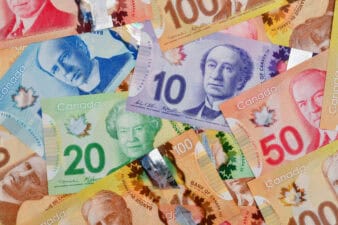According to a recent poll commissioned by Royal Bank of Canada, approximately 43% of Canadians are misinformed when it comes to Tax-Free Savings Accounts (TFSAs) and are not using the vehicle to grow one’s wealth optimally.
That’s a massive problem that needs to be addressed. The TFSA is an invaluable tool that could mean the difference between retiring very comfortably many years (or decades) in advance and being stuck in the workforce into one’s 60s or even one’s 70s.
Indeed, educating yourself on how to use a TFSA properly could be a life-changing decision. And if you’re one of the Canadians who’s been guilty of being “misinformed” or neglectful when it comes to the TFSA, you’ve come to the right place. This piece will review three of the biggest mistakes that one could make with their TFSAs.
Not contributing your maximum allowable amount
In 2019, you should have a cumulative sum of $63,500 that you’re able to contribute. Every year moving forward, you should expect to add an additional $6,000 annually. If you’ve contributed some amount in the past, but aren’t sure whether you’ve still got room to hit the maximum amount, you should check with the CRA to confirm how much you can add currently to avoid over contribution.
If you’re able but are not contributing the maximum allowable amount, you’re not getting the most of your TFSA, and could be leaving tens of thousands of dollars on the table over the course of your investing lifetime.
Over contributing
If you’re not keeping track of how much space you can contribute, you risk over contribution, and you’ll be subject to unnecessary penalties. It’s a can of worms you don’t want to open, so make sure you know how much you’re able to contribute before plunking down as much as you can into the account. You’ll thank yourself later.
Hoarding cash in TFSA “high” interest savings accounts
This is probably the most common mistake that TFSA investors have been making. Sure, your bank may offer you “high” interest savings accounts within your TFSA, but news flash: the interest rates are nominal, and you’d be lucky to pull ahead of the rate of inflation over the long term.
In essence, the word “high interest” on such savings accounts is very misleading to misinformed Canadians. Sure, you’ll get a higher rate than in a non-registered account, but you still won’t grow your wealth or purchasing power in the grander scheme of things.
Being overly conservative with low-return investments
If you haven’t fallen into the “high” interest savings account trap, you may be like many of the excessively risk-averse Canadians who’ve opted to hoard “risk-free” instruments like GICs, bonds, and all the sort.
These products are not much better than cash. In fact, long-term bonds and GICs may actually be inferior to cash due to their lower liquidity.
While it’s fine to have a chunk of your wealth in such “risk-free” securities, it’s a mistake to have it account for a majority of your TFSA, especially if you’re a young investor who’s not even thinking about retirement yet.
If you are a risk-averse investor by nature, look to low-volatility plays like the BMO Low Volatility Canadian Equity ETF (TSX:ZLB) instead — it’s a feast of significant gains made possible by equities with a little less indigestion from the stock market roller coaster ride that’s been made more stomach-churning by President Trump.
Holding high-yield U.S. (foreign) dividend stocks
Finally, holding U.S. dividend stocks within a TFSA is a tricky mistake — one that many of may be guilty of. As you may be aware, U.S. (and foreign) dividends are subject to a withholding tax. The Canada-U.S. Income Tax Treaty allows Canadians to claim up to 15% of U.S. taxes paid on dividends.
With a TFSA however, you lose your power to claim such a credit and the portion of your U.S. dividend vanishes in a poof of smoke. Thus, the TFSA ought to be a no-fly zone for all your favourite dividend-paying U.S. (or foreign) stocks.
Instead of U.S. (or foreign) dividend stocks, look to domestic dividend payers, or ETFs like the ZLB, which has some of the finest free-cash-flow-generative dividend-growth plays on the TSX Index. The 2.4% yield is yours for the keeping!
Stay hungry. Stay Foolish.








